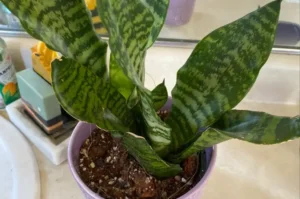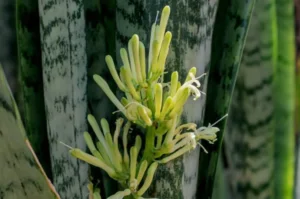Snake plants, also known as Sansevieria or mother-in-law’s tongue, are popular houseplants due to their striking appearance and low-maintenance nature. However, many plant enthusiasts wonder how to encourage their snake plant to grow faster. In this comprehensive guide, we will explore various factors and tips to help you achieve faster growth for your snake plant.
Understanding the Growth of Snake Plants
Snake plants are native to tropical regions of West Africa and belong to the succulent family. Their growth is influenced by various factors including sunlight, watering, temperature, soil conditions, and more. By optimizing these variables, you can encourage robust growth and ensure your snake plant thrives.
How Can I Make My Snake Plant Grow Faster?
To make a snake plant grow faster, place it in bright, indirect light, use well-draining soil, and water only when the soil is completely dry. Ensure the pot has drainage holes to prevent root rot, maintain temperatures between 70-90°F (21-32°C), and fertilize sparingly with a diluted liquid fertilizer during the growing season. Repot into a slightly larger pot when roots become crowded, and promptly address any pests or diseases to support healthy, accelerated growth.

Factors that Influence the Growth of Snake Plants!
Let’s break down the key factors that can speed up your snake plant’s growth:
1- Sunlight Requirements of the Snake Plant
Snake plants are surprisingly adaptable to light, but they prefer bright, indirect light. A spot near a window with filtered sunlight is ideal. Too much direct sun can scorch the leaves, while too little light will slow growth.
2- Watering the Snake Plant
Overwatering is the most common mistake people make with snake plants. They’re succulents, so they prefer their soil to dry out completely between waterings. Stick your finger in the soil – if it’s dry a couple of inches down, it’s time to water. When you do water, give the plant a good soak, but don’t let it sit in water.
3- Temperature and Humidity of the Snake Plants
Snake plants are comfortable in average household temperatures (70-90°F or 21-32°C). They don’t need high humidity and actually prefer drier air.
4- Potting and Repotting the Snake Plant
A well-draining pot is crucial for snake plants. Choose a pot with drainage holes and use a potting mix designed for cacti and succulents. Snake plants like to be slightly rootbound, so don’t repot too often. When you do repot, choose a pot that’s only slightly larger than the current one.
5- Soil Mix for Snake Plants
A well-draining soil mix is essential to prevent root rot. Look for a mix specifically formulated for succulents or create your own by combining potting soil with perlite or coarse sand.
6- Fertilizing the Snake Plants
Snake plants aren’t heavy feeders, but a little fertilizer during the growing season (spring and summer) can help them grow faster. Use a balanced, diluted liquid fertilizer once a month.
7- Pests and Diseases that Affect the Snake Plants
Snake plants are generally pest and disease resistant. However, they can occasionally be affected by mealybugs or scale insects. If you notice any pests, treat them with neem oil or insecticidal soap.
8- Propagation of the Snake Plants
Snake plants are easy to propagate by division or leaf cuttings. This is a great way to get new plants and fill out your collection.
How Do Snake Plants Grow Faster?
Snake plants grow faster when their basic needs are met: adequate light, proper watering, well-draining soil, and a comfortable temperature.

Tips to Grow Snake Plants Faster:
- Bright Light: Place your snake plant near a window with bright, indirect light.
- Water Wisely: Only water when the soil is dry.
- Well-Draining Soil: Use a succulent or cactus mix.
- Fertilize Lightly: Use a diluted fertilizer once a month during the growing season.
- Warm Temperatures: Keep temperatures between 70-90°F (21-32°C).
Common Mistakes to Avoid
- Overwatering: This can lead to root rot and kill your plant.
- Low Light: Snake plants will grow slowly in low light conditions.
- Too Much Fertilizer: Over-fertilizing can burn the roots.
Conclusion
With the right care, your snake plant can become a vibrant and fast-growing addition to your home. Remember, patience is key, but by following these tips, you’ll be well on your way to a thriving snake plant!
Frequently Asked Questions (FAQs):
What kind of soil should I use for my snake plant?
A well-draining soil mix designed for succulents.
Can I grow my snake plant in low light?
Yes, but it will grow much slower.







2 thoughts on “How to Grow Snake Plant Faster?”
I got what you intend,saved to fav, very decent website .
Have you considered playing music for your snake plant to stimulate faster growth? Some studies suggest that certain types of music can positively impact plant growth by enhancing nutrient absorption and photosynthesis. Why not experiment with some soothing tunes to see if it makes a difference for your beloved snake plant?